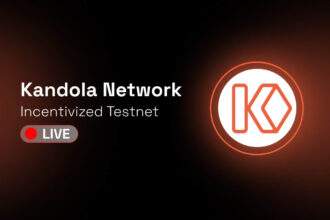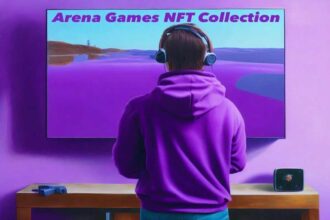As AI innovations are receiving more recognition across different sectors of late, virtual tokens relating to this sector are enjoying the same privilege in the crypto sphere. Now, investors are watching these AI tokens more closely than ever, thus birthing the need for an insightful piece about how these coins are pitching against one another. In that regard, this educative piece will focus on how SingularityNET (AGIX) has performed against The Graph (GRT) in 2023.
Worth noting that since the turn of the year, The Graph’s native coin has soared in value by over 170%. Meanwhile, GRT the utility token to SingularityNET has recorded a return of 965% since the start of the year. The figure indicates that despite the dominance of GRT, AGIX is proving to be a serious contender in the AI token sphere.
Background Check Into SingularityNet’s Development
Founded by the trio of Dr. Ben Goertzel, Simone Giacomelli, and Dr. David Hanson in 2017, SingularityNET is a blockchain-supported platform that supports users to design, share and trade AI services. The platform has an in-built AI marketplace that employs AGIX as its utility coin.
According to findings, this marketplace can as well be utilized by users as an avenue to showcase their AI solutions, while providing them with needed tools to monitor their output. Various studies point to how SingularityNet focuses on providing Artificial General Intelligence with efficient attributes. The platform through its marketplace houses a variety of innovative AI services. These services cut across voice cloning, image generation, multi-language translators, and many others.
Also, Sophia, Humanoid popularly dubbed “World Most Expensive Robot” is attributed to be one of the solutions pioneered by the platform. With this super robot, importance of AI innovations in easing human day-to-day life dawned on many. Leading to a surge in the introduction and adoption of AI solutions. SingularityNET is working to ensure that this innovation understands the human language. This pursuit comes with an intention of ensuring that this robot does everything an average human could do.
Deployment of Smart Contracts on SingularityNet
To maintain balance and fairness for network participants, SingularityNet engages Smart contracts. These smart contracts helps in establishing a connection between a user and a developer. With their aides, a user can enjoy a developer’s tool. Nonetheless, users are bound to abide by some guidelines structured by the developers. The self-executing nature of these smart contracts provides developers the privilege of setting them to their preferences.
This feature has aided the success story of SingularityNet as it provides developers with the opportunity of focusing solely on their expertise, leaving the smart contracts to take charge of the user-developer negotiations. Also, these smart contracts execute the price negotiation process with users on behalf of the developer.
History of AGIX
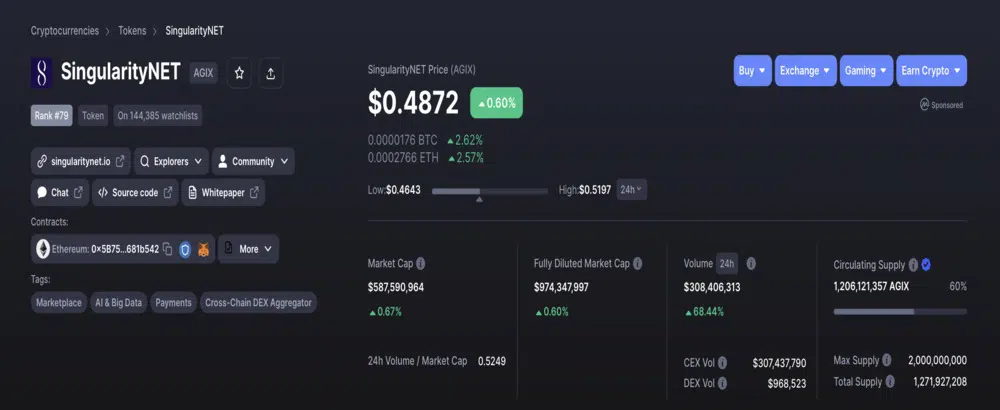
AGIX is an ERC-20 coin supported by the Ethereum Proof-of-Stake consensus mechanism. With the coin, users can surf, test and trade different AI services.
Stern research on the History of AGIX revealed how the coin was introduced shortly after the inauguration of SingularityNET in 2017. Since its inception, the coin attained notable heights with the first of them coming less than a minute into the Initial Coin Offering (ICO) of the token as it racked up about $36 million within such short period.
During the platform’s ICO, investors bought half of the AGIX in circulation. The distribution of system of the token set aside about 20% for those that contributed to the early development of the project. Accordingly, the core team of SingulairtyNet took 18%, while 8% of the coin was dedicated to the future advancement of the project. Lastly, 4% of the token went into the coffers of the project’s security bounty program. The maximum supply of the coin is pegged at 2 billion with 1.20 billion of it in circulation as of press time.
Furthermore, in 2020, AGIX enjoyed a host of landmark achievements. First, SingularityNET initiated a staking feature for the coin, supporting investors to stake AGIX and earn passively. More so, in the same year, holders of the coin were bestowed with the opportunity to propose and vote on changes relating to the functionality of the platform. Then, the development surfaced as part of the firm’s Enactment Proposal feature.
Highlights of The Graph’s development
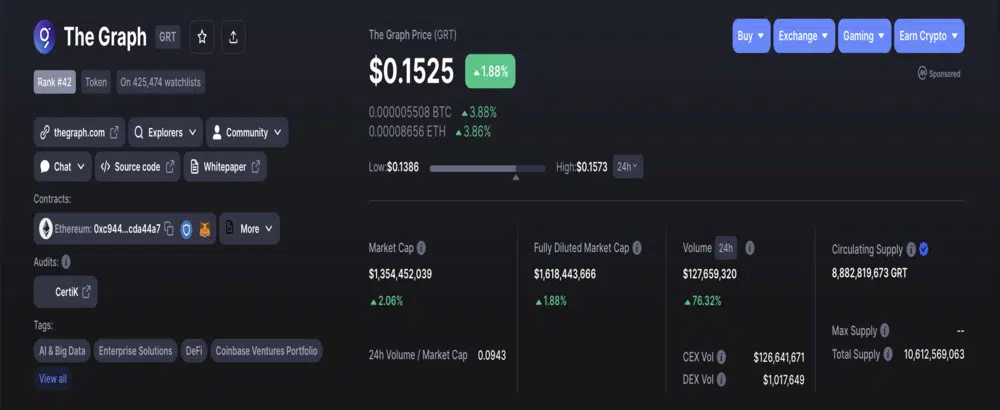
As an Indexing protocol for querying data for Ethereum, POA, and IPFS, The Graph has proven useful in powering numerous solutions in the DeFi and Web3 space. Notably, The Graph is prominent for its simplified process of aiding developers to build on its network seamlessly. Also, the platform focuses on providing efficient decentralized public systems for general usage. The innovation was founded by Yaniv Tal, Brandon Ramiez, and Jannis Pohlmann in 2018. The project is benefiting hugely from the antecedents of its developers due to their working experience with top projects like Ethereum and Decentraland.
Findings into the functionality of The Graph provided insights to how the platform aggregates data. Initially, the process of how The Graph aggregates data occur via its nodes. These nodes monitor network blocks and smart contracts from time to time to gather relevant data. Upon finding relevant information, the nodes input them into the designated Subgraphs. Thereafter, users who are classified into three categories assist in saving the data to The Graph’s database. These users are Curators, Indexers, and Delegators. Though, there are other categories of network participants relating to the platform.
Simply, The Graph can be compared with Google, as it’s mostly regarded as the search engine for blockchain. Therefore, it’s safe to say that The Graph is to Web3 what Google is to Web2.
Network Participants on The Graph
Network participants on The Graph network are categorized into (6) six namely; Consumers, Indexers, Curators, Delegators, Fishermen, and Arbitrators. Findings indicated that Arbitrators are like a referee on the platform that intervenes in disputes. Mainly, their responsibility is to determine if an indexer is malicious or otherwise. Fishermen on the other end testify to the accuracy of the platform’s swiftness and efficiency in responding to Consumers’ requests.
Additionally, Delegators are individuals that don’t own a node but delegate their tokens to indexers with the intention of getting passive rewards. However, these delegators operate at their own will to invest their tokens in any indexers of their choice. Curators on the network are subgraph developers that recommend the API indexers should consider into the graph network. Worth mentioning that a curator could be a mere community member, subgraph developer, or data consumer.
Findings revealed that indexers are node operators on the network that stake GRT to qualify for the processing of index and query on the network. They are saddled with the responsibility of indexing data from decentralized APIs, thus, getting rewards in form of GRT through query and indexing returns. Last but not the least, Consumers are users of the network that pays indexes for their requests. Users under this category could either be individuals, service providers, or tools linked to the platform.
GRT’s Relevance to The Graph Network
An overview of the GRT’s relevance to The Graph Network indicates how the utilization of the coin evolves around Indexer staking and Curator Signaling. For Indexer staking, Indexers are mandated to deposit a minimum of 100,000 GRT for economic secuirty. For every malicious activity, the network will automatically deduct part of the deposit.
Insight into Curator Signaling indicated how the GRT supports the network’s curation market. For Curators to mint curation shares of a subgraph, they must deposit GRT in a Bancor Bonding Curve. This system as well aids Curators to earn from a subgraph’s query revenue. However, this will only manifest if they correctly guess subgraphs with high quality. However, Curators and Indexers’ earning are symmetrical to the amount they stake. Like AGIX, the GRT is an ERC-20 token.
Breakdown of its relevance highlighted how the network utilizes GRT to distribute various resources within its Ecosystem. Also, developers and network participants pay for the utilization and creation of subgraphs with the GRT coin.
Developers design how dApps use data from the network by indexing them. These developers are known as Indexers and they also structure decentralized markets for queries in order to let users pay GRT for the services they enjoy on The Graph.
For The Graph, GRT has recorded sizeable revenue since its inception in 2019. The platform realized about $10 million from the public sales of GRT in 2022 from prominent organizations like Coinbase and Digital Currency Group.
As of March 24, 2023, there are 8.8 billion GRT in circulation with a total supply of 10 billion, however, this supply can increase with time as the maximum supply of the token is infinite. The increament of the token’s supply will come in form of indexing reward which will go up by 3% annually. However, it’s subject to subsequent review by The Graph Council.
How AGIX Is Closing Gap on GRT With a Good Run In 2023
According to Coinmarketcap, GRT is ranked above AGIX due to the former’s market cap which is worth $1.2 billion. AGIX on the other hand has a market cap worth $584.88 million. Despite enjoying the dominance of being the King of AI coins, GRT’s reign is presently under threat by the high-flying AGIX.
This purusit is evident in how the native coin of SingularityNET has rallied since the start of the year. Since we ushered in the new year, The Graph’s native coin has soared in value by over 170%. Meanwhile, GRT the utility token to SingularityNET has recorded a return of 965% since the start of the year. The figure indicates that despite the dominance of GRT, AGIX is proving to be a serious contender in the AI token sphere.
Another pointer to how AGIX has excelled strongly in 2023 is its growing market cap. Since the start of the year, AGIX market cap has grew by 1024%. Meanwhile, GRT’s market cap enjoyed a 162% increase which is minimal compared to AGIX witnessed. With these pointers, it’s becoming evident that The Graph’s dominance in the AI token space is under tense pressure with the growing competition from SingularityNET.
Drivers of the growth
The fast-paced trend of this token can be attributed to the growing efforts of combining AI and blockchain innovations to produce game-changing solutions. Also, another factor to this rally is the attention SingularityNet’s humannoid robot; Sophia is gaining of late. Another factor that sponsored the pursuit is the project’s collaboration with Cardano in February 2023.
The close integration of blockchain and #AI is a key part of creating a #decentralized, democratic, beneficial #AGI, and the collaboration between #SingularityNET and #Cardano is currently at the forefront of this integration.#BuildingOnCardano #BuildingOnSNET pic.twitter.com/rdl1fA4VjT
— SingularityNET (@SingularityNET) February 9, 2023This is evident in how AGIX has enjoyed price rallies shortly after their respective emanation. The introduction of game-changing AI solutions like ChatGPT further contributed to the surge. Similarly, GRT also benefited from that as well, but AGIX gardened the most goodies due to how it has rallied to a higher level than GRT.
The recent BTC rally saw more inflow of investment into other crypto assets which AGIX and GRT both benefited from. In that regard, AGIX gained more compared to GRT.
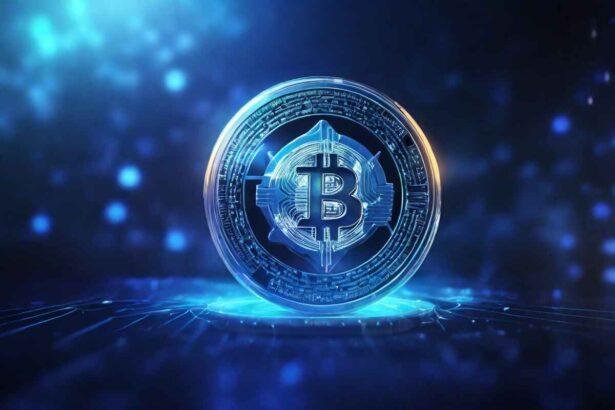



![The Top NFT Marketplaces [2026] 5 NFT Marketplaces](https://droomdroom.com/wp-content/uploads/2023/03/NFT-Marketplaces-150x150.jpeg)














